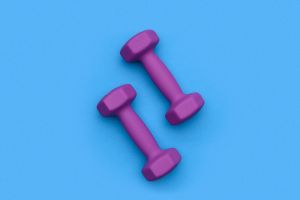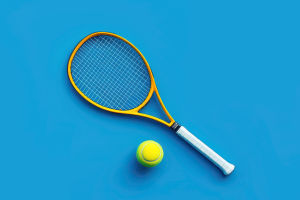Choosing the right tennis racket is crucial for any tennis enthusiast, whether you are a novice or an experienced player.
A suitable racket can help you improve your skills while reducing the risk of sports injuries.
When choosing, multiple factors will affect the final decision, including material, weight, balance point, racket face size, and grip size. Understanding how these factors affect your playing performance can help you choose a racket more wisely.
First of all, the material of the tennis racket is an important consideration. Common materials are aluminum alloy, graphite, and carbon fiber.
Aluminum alloy rackets are lighter, suitable for beginners, easy to control, and affordable. Graphite and carbon fiber materials are more durable and suitable for players with some experience.
Graphite rackets are light and rigid, which is conducive to the transmission of power; while carbon fiber materials provide stability and help better control the direction of the ball when hitting the ball. The material not only affects the weight of the racket but also determines its durability and feel when hitting the ball.
The weight of the racket is also one of the key factors. Generally, the weight of the racket is between 260 grams and 340 grams. Lighter rackets are suitable for players with weaker or beginner players because they are easier to control and suitable for a style that pursues speed and flexibility.
Heavier rackets provide greater hitting power and are suitable for power players, but long-term use may cause arm fatigue or even injury. Therefore, when choosing, you need to balance your strength and swing speed to ensure that the weight of the racket matches your physical level.
The balance point is the reflection of the weight distribution of the racket, which is divided into head-heavy, head-light, and balanced types.
Head-heavy rackets are suitable for players who need to increase the power of hitting the ball, usually suitable for baseline play; while head-light rackets are easier to control and suitable for players who focus on speed and reaction, such as those who like to volley at the net.
Balanced rackets take into account both power and control and are suitable for players with a variety of playing styles. When choosing, you need to determine the appropriate balance type based on your playing style.
The size of the racket face affects the tolerance and control when hitting the ball. Racquets with larger racket faces are usually more than 100 square inches and are suitable for beginners because they have a larger sweet spot and high tolerance when hitting the ball.
Smaller racket faces (90 to 98 square inches) are more suitable for skilled players and can provide more precise control of the ball. Beginners can start with a large racket face racket, and as their skills improve, they can gradually choose a racket with a smaller racket face to gain a better sense of control.
Grip size is another detail that needs to be paid attention to. Different hand shapes and grip styles require the selection of the right grip size to ensure comfort when holding the racket. If the grip is too large or too small, it will not only affect the effect of the shot but may also cause hand fatigue or injury.
When measuring the grip size, you can determine whether it is suitable by holding the racket and checking the distance between the palm and the grip. Choosing the right grip will make you swing the racket more freely during the game.
In addition to these major factors, the tension of the racket's string bed will also affect your hitting power and control. Racquets with higher tension provide better control, while rackets with lower tension allow you to hit the ball more powerfully.
When choosing a racket, the combination of racket strings is also a detail that needs to be considered to further optimize your hitting performance.
Choosing a tennis racket that suits you requires a comprehensive consideration of many factors. No one racket is right for everyone, and finding the racket that works best for you is key.
By trying different rackets and evaluating how they perform in actual play, you will find a racket that can help you improve your skills and enjoy the game.


